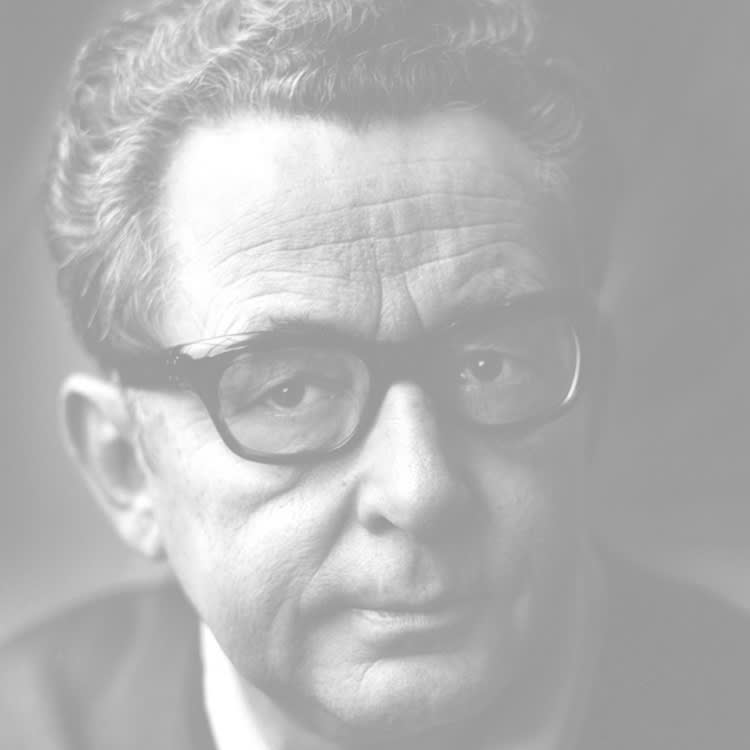HANS HARTUNG 1904-1989
Hans Hartung is an Abstract and Expressionist artist, whose works are exhibited at the HELENE BAILLY gallery.
Hans Hartung is commonly presented as a standard-bearer of the Ecole de Paris and the Lyrical Abstraction and first considered as a post-war painter. Nevertheless, in the late 30's, the German born artist had already participated in numerous exhibitions throughout Europe. His career really began in 1922 : at only eighteen, without knowing Kandinsky's theories, he produced a series of abstract watercolors striking by their sheer expressiveness. This was the beginning of a career that lasted nearly seventy years and was punctuated by constant technical innovations.
Paradoxical artist, Hartung would often be at the opposite of the image the critics built of him, resulting in a « distorted reception » (Annie Claustres).
Presented as a figurehead of a gestural, lyrical and emotional painting, he remained yet passionate for mathematics, and his painting must be apprehended through its rationality : from the 30's to the late 50's, he first produced small size works, spontaneously executed on paper ; then he created the painting by laying down a grid and scaling up the small size paper onto a canvas, referring point by point.
The 60's also marked a turning point. Hartung stopped working by reproducing small formats but entered a patient search for technological innovation, including the production of multiple tools. 1960 was also when he won the Grand Prize for painting at the Venice Biennale, reaching the top of international recognition. Hartung would never stop creating, painting with more ardor until his last days in his property of Antibes that he designed himself.
Besides a life dedicated to painting, Hans Hartung's path was a journey into history, to which he was confronted by interrupting his career during World War II. Twice, he would engage in the Foreign Legion to fight alongside France against Germany - his home country - and would lose a leg in combat. He would get the French nationality in 1946.
His life and career are inseparable from those of Anna-Eva Bergman, a woman artist he met in 1929 in Paris. Married in 1929, a few months after they met, they divorced in 1938. In 1939, Hartung remarried the artist Roberta Gonzalez, daughter of the sculptor Julio Gonzalez. After the episode of the war and his return to Paris, Hartung's path crossed again Anna-Eva Bergman's in 1952 and they resumed the course of their relationship ; Hartung divorced Roberta Gonzalez and remarried Bergman in 1957. Soon after, as they were living in their studio in the Rue Gauguet in Paris, they made the project to design their villa and studios on the French Riviera, in a space perfectly suited to their needs. They bought an olive grove in 1960 in Antibes and Hartung designed the plans of the property.
In 1973, after five years of construction, the couple moved to the « Champ des Oliviers » with the idea already in mind to transform this place, after their death, into a foundation dedicated to the recognition of their works.






